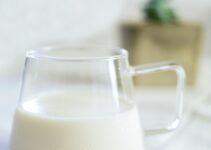
Breast milk is rich in the essential nutrients that support healthy growth. Besides, it enables a baby to have strong immunity and fight common illnesses.
It isn’t a surprise therefore that many mothers strive to breastfeed their young ones. When natural breastfeeding isn’t possible, expressing milk is the next best alternative.
During the day, you may express a large quantity of milk that the infant can’t consume. Instead of keeping several bottles of breast milk in the fridge, it’s tempting to mix previously and freshly expressed milk. However, you shouldn’t rush to do so.
But, Why Can’t You Add Warm Breast Milk to Cold?
It’s all about the temperature difference and the danger of contamination. That’s why it’s best to combine the two if they are at the same heat level. That means either cooling or warming one bottle of breastmilk.
Further, warming the cold milk to reach the same degree of heat as its counterpart is challenging.
And the longer the milk takes, the higher the chances of contamination or degradation in nutritional value occurring. After combining the two, the oldest milk defines the expiration period of the mixture.
However, it’s worth noting that more studies are still going on the subject.
Possible Reasons Against Adding Warm Breast Milk to Cold
Promoting Bacterial Growth
The outstanding difference between warm and cold breast milk is the temperature difference. The bad bacteria thrive more in warm temperatures than in cold.
Therefore, adding warm milk to cold breast milk raises its temperature level. The resulting solution is breast milk whose temperature favors the growth of bad bacteria. Meaning, it’s more likely to go bad.
Shortened Lifespan
After expressing milk, it stays fresh for a limited period. Depending on the temperature of the surrounding area, it can stay up to 4 hours at room temperature. Refrigeration pushes its expiry duration to 4 or 5 days.
If you cool the warm milk and mix it with the previously refrigerated cold milk, its expiry duration depends on the previously stored milk. For example, if the cold milk had taken 2 days in the refrigerator, the mixture won’t take more than 3 days before it goes bad.
Possibility of Forming Milk Clumps
Another reason for not adding warm breast milk to cold milk is the possibility of forming clumps. The warm milk may cause the fats to melt faster before milk and form an unsmooth solution.
Still, some mothers also claim that doing so slightly alters the taste of the milk, making the baby more likely to reject it.
When it’s Safe to Combine Breast Milk
 It’s only safe to combine breast milk if they are at the same temperature level. That is;
It’s only safe to combine breast milk if they are at the same temperature level. That is;
- Freshly expressed milk with freshly expressed milk
- Mixing refrigerated with refrigerated milk
But before mixing breastmilk in different containers, ensure the milk in the two containers hasn’t gone bad. In addition, label the containers and indicate the expiry date.
For example, if one has stayed in the fridge for two days and another for one day, count the expiry date based on the milk container that has taken the longest time in the refrigerator.
How to Combine Breast Milk
Below are ways of combining breast milk under different settings;
Fresh and Refrigerated Breast Milk
Fresh breast milk from the pump is at a different temperature from the refrigerated one. Hence, CDC discourages mixing the two directly.
A better method is cooling the freshly pumped milk to the same temperature as the refrigerated milk. Otherwise, you risk promoting the development of bad bacteria.
Fresh and Frozen Breast Milk
It isn’t wise to combine fresh breast milk from the pump with frozen milk and refreeze. If you need to freeze the fresh milk, put it in a separate container, label it, and store it in the freezer.
Once you remove frozen milk (or unseal the bag) from the freezer, you need to thaw and use it immediately.
Mixing Fresh and Thawed Breast Milk
Before you add defrosted breast milk to fresh breast milk, let it cool. It’s only safe to combine defrosted and fresh breast milk of the same temperature level.
And even after mixing the two, you have to use the mixture within a timeframe of two hours. Refrigerating or refreezing breast milk isn’t a wise idea.
When Not to Combine Breast Milk
There are cases when it isn’t wise to combine breast milk:
When the Temperatures are Different
When the bottles of breast milk are at dissimilar heat levels. Mix only breast milk in two containers that are of the same heat levels.
If Breast Milk has Gone Bad or Expired (Regardless of the Smell)
Remember milk can go bad even before the expiration period. Poor storage and surrounding temperature are major influencing factors in such cases. Also, don’t mix breast milk from different nursing mothers.
Health Complications
If your child is ill, suffers health complications, or is a preemie, do not mix breast milk under all circumstances. Such children need fresh breast milk to fortify their immunity levels.
FAQs

How Long Can Breast Milk Take Without Going Bad?
The exact period depends upon the initial milk temperature level and storage conditions. At room temperature, the milk takes a maximum of four hours.
Freshly expressed breast milk can stay fresh in the fridge for four days. Otherwise, keep it in the freezer.
On the other hand, fresh breast milk from the pump is safe in the deep freezer for up to six months. Beyond six months, the milk begins to lose its crucial ingredients.
Can You Mix Breast Milk from Different Pumping Sessions?
It’s possible to mix breast milk from different hours or a day. Ideally, you should combine breast milk on the same day (24 hours). But if you must combine milk from different pumping sessions, label it correctly.
Use the date of the milk that has taken the longest time in the fridge as the reference point.
What Happens When You Add Warm Breast Milk to Cold?
Adding warm breast milk to cold warms up the cold bottle of milk.
Can You Add Fresh Breast Milk to Refrigerated Breast Milk?
You can add fresh breast milk to refrigerated breast milk if you bring them to the same heat level. An ice pack in a cooler can help cool the freshly pumped milk before combining it with the frozen milk.
Conclusion
You can reduce the chances of cross-contamination by breastfeeding your child without expressing milk. If you pump out milk, the sooner you use it, the better.
Before adding warm breast milk to cold one, bring them to the same temperature level. Some studies support the pooling of breast milk over a 24-hour period.



